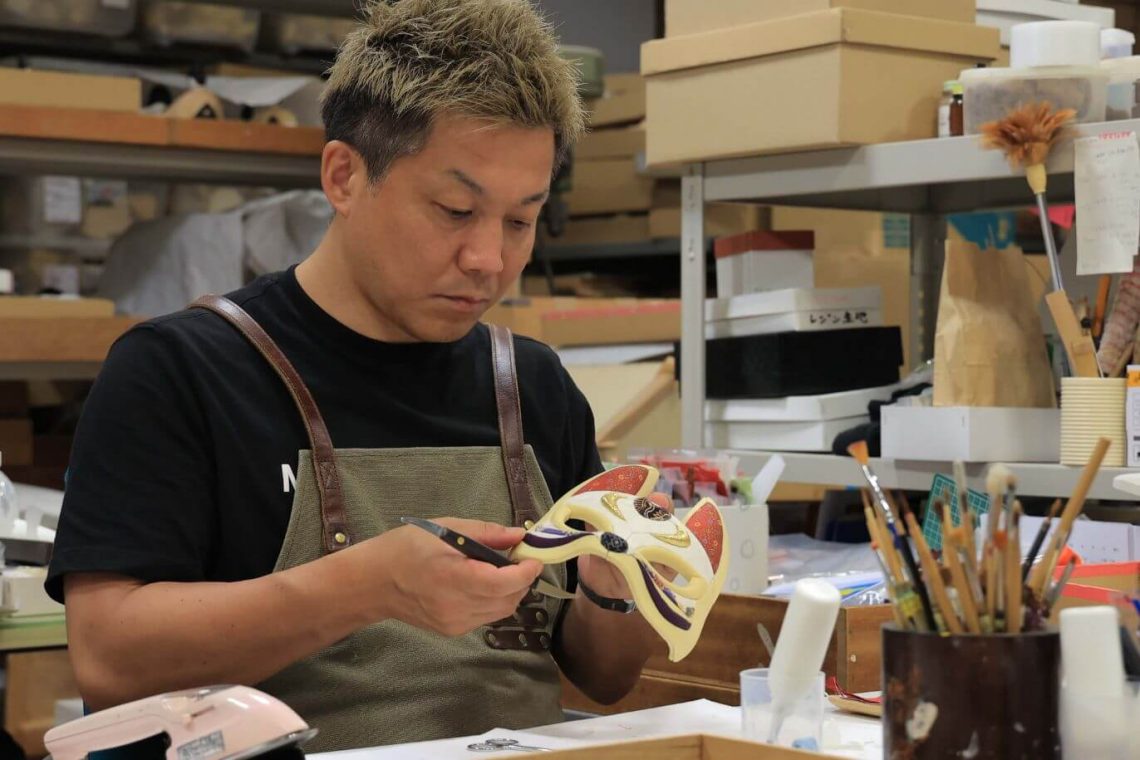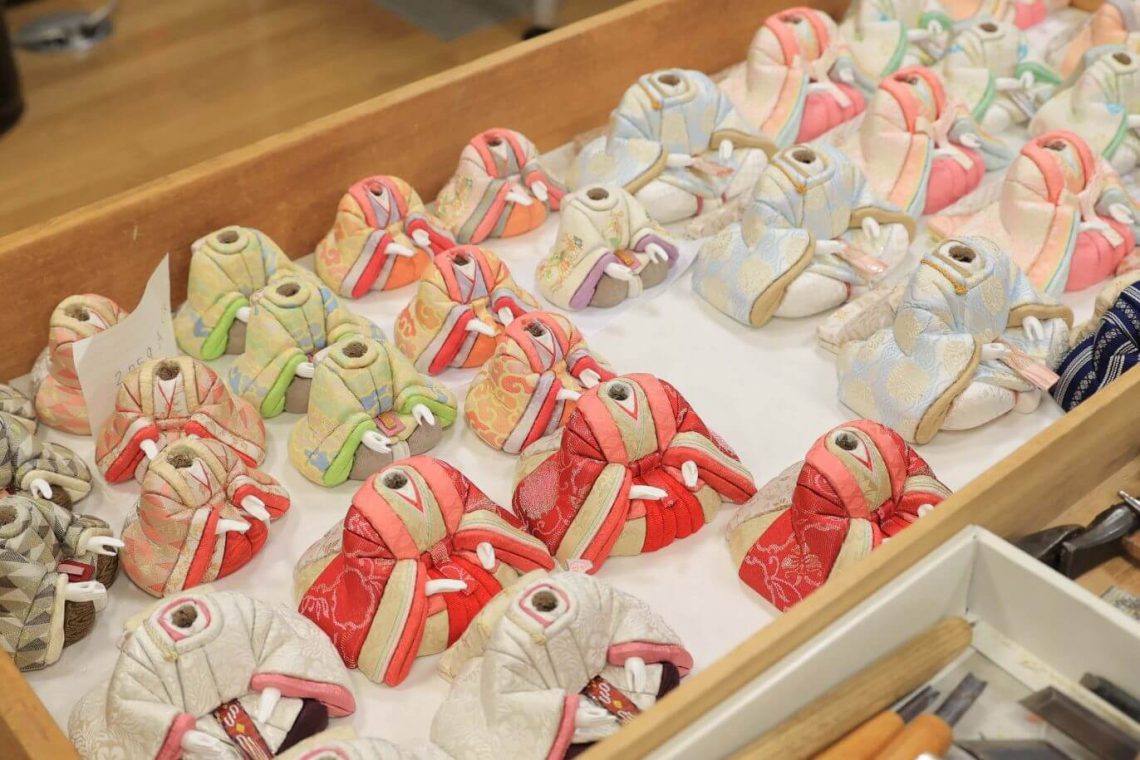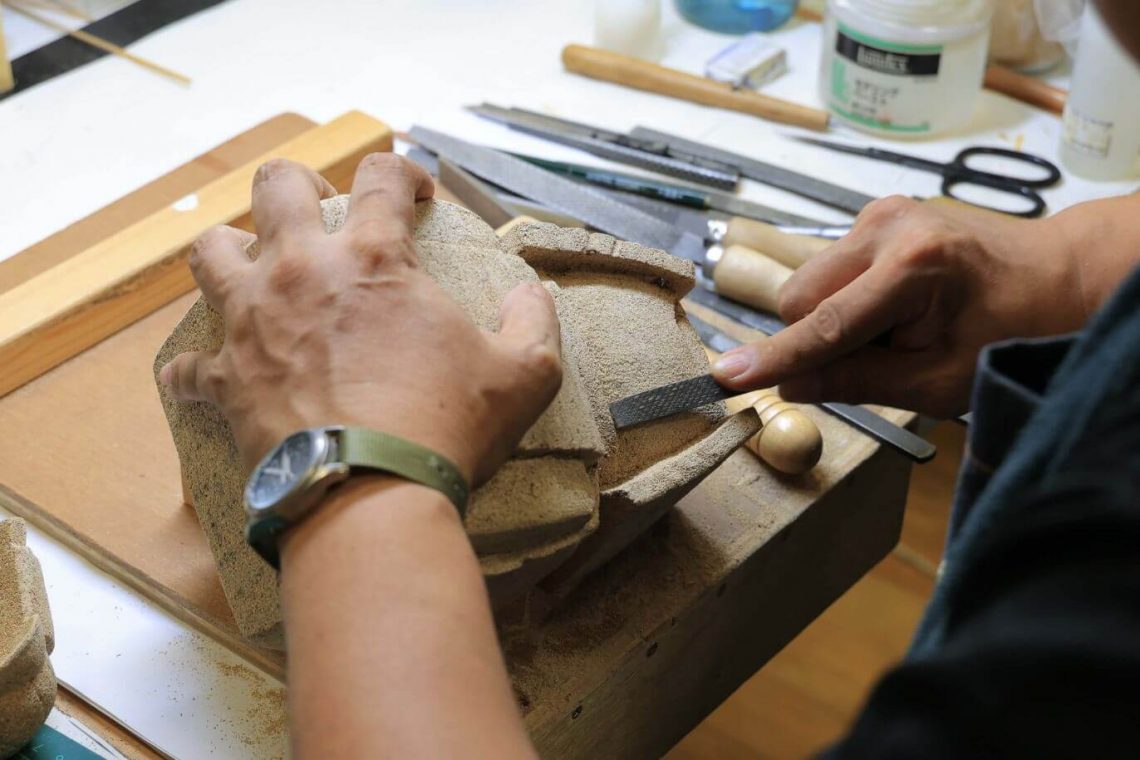A unique sensibility that intersects traditional techniques with new forms of expression.

Kakinuma Dolls, located in Koshigaya City, Saitama Prefecture, is both a shop and a workshop. Founded in 1950, this long-established business is soon approaching its 75th anniversary. The history of kimekomi dolls dates back approximately 280 years to the late 1730s.
It is said that the origins of kimekomi dolls trace back to Tadashige Takahashi, who served at Kamigamo Shrine in Kyoto. He is believed to have created the first dolls using leftover materials from making ceremonial tools.

Because they originated along the Kamo River, these dolls were initially called Kamo Dolls. However, as the technique involved carving grooves and pressing fabric scraps into them to dress the dolls, they gradually became known as kimekomi dolls.
This technique spread to Edo, where molds made of clay instead of wood were used, transforming the craft into something that could be mass-produced. This led to the creation of Edo kimekomi dolls. In addition to the ability to produce them in large quantities, the use of clay allowed for greater freedom in shaping and design.
The award-winning new product for Reiwa 6, “Kimekomi Kagura,” which received the Tokyo Governor’s Award, is a unique creation that breaks away from the traditional concept of display-only items. It is designed to be worn, enshrined, or displayed, offering a fresh perspective in its use and presentation.
Kakinuma believes that the mask form, which has been seen in many regions and cultures since ancient times, is likely to be familiar and approachable for people regardless of their nationality or cultural background.

 Kakinuma Ningyo
Kakinuma Ningyo
1-21-11, Shin-koshigaya,
Koshigaya-shi, Saitama, 343-0857
Tel:+81-48-964-7877
Fax:+81-48-962-3126
Toshimitsu Kakinuma
info@kakinuma-ningyo.com
web:https://www.kakinuma-ningyo.com/


